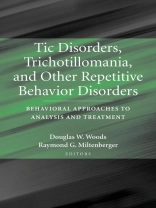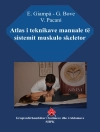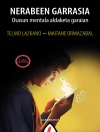Tics, trichotillomania, and habits such as thumb-sucking and nail-biting tend to resist traditional forms of therapy. Their repetitiveness, however, makes these dissimilar disorders particularly receptive to behavioral treatment. Now in soft cover for the first time, this is the most comprehensive guide to behavioral treatment for these common yet understudied disorders. Tic Disorders is geared to researchers but accessible to to patients and their families as well.
Inhoudsopgave
Contributors. Preface. Acknowledgements. 1. Introduction to Tic Disorders, Trichotillomania, and Other Repetitive Behavior Disorders: Behavioral Approaches to Analysis and Treatment; D.W. Woods, R.G. Miltenberger. 2. Assessment of Repetitive Behavior Disorders; J.E. Carr, J.T. Rapp. 3. Physical and Social Impairment in Persons with Repetitive Behavior Disorders; D.W. Woods, et al. 4. Characteristics of Tic Disorders; D.B. Findley. 5. Behavioral Interventions for Tic Disorders; T.S. Watson, et al. 6. Habit Reversal Treatment Manual for Tic Disorders; D.W. Woods. 7. Characteristics of Trichotillomania; R.G. Miltenberger, et al. 8. Behavioral Interventions for Trichotillomania; A.J. Elliott, R.W. Fuqua. 9. Habit Reversal Treatment Manual for Trichotillomania; R.G. Miltenberger. 10. Characteristics of Oral-Digital Habits; P.C. Friman, et al. 11. Behavioral Interventions for Oral-Digital Habits; V.J. Adesso, M.M. Norberg. 12. Habit Reversal Treatment Manual for Oral-Digital Habits; D.W. Woods, M.P. Twohig. 13. Analysis and Treatment of Oral-Motor Repetitive Behavior Disorders; K.D. Allen, J. Polaha. 14. Repetitive Behavior Disorders in Persons With Developmental Disabilities; J.E. Ringdahl, et al. Index.












